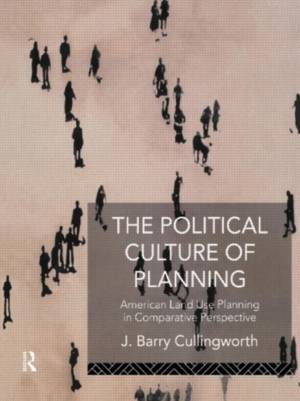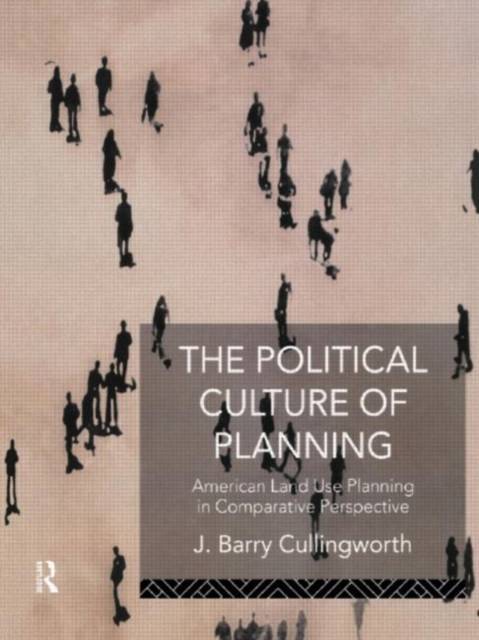
En raison d'une grêve chez bpost, votre commande pourrait être retardée. Vous avez besoin d’un livre rapidement ? Nos magasins vous accueillent à bras ouverts !
- Retrait gratuit dans votre magasin Club
- 7.000.000 titres dans notre catalogue
- Payer en toute sécurité
- Toujours un magasin près de chez vous
En raison de la grêve chez bpost, votre commande pourrait être retardée. Vous avez besoin d’un livre rapidement ? Nos magasins vous accueillent à bras ouverts !
- Retrait gratuit dans votre magasin Club
- 7.000.0000 titres dans notre catalogue
- Payer en toute sécurité
- Toujours un magasin près de chez vous
The Political Culture of Planning
American Land Use Planning in Comparative Perspective
J Barry Cullingworth
Livre relié | Anglais
250,45 €
+ 500 points
Format
Description
The Political Culture of Planning is written for two quite distinct readerships. The main body of the book synthesizes a mass of information to provide an overview of a complex and amorphous field. This material is designed to meet the needs of students who require a succinct account of the American system of land use planning. These readers can ignore the notes. For those who are embarking upon a much wider and deeper study of land use planning in the US the notes are crucial: they provide the guideposts to an immensely rich literature. The first four parts of the text present the main issues of land use planning in the US. Part 1 assesses the US zoning system. The introductory chapter discusses the meaning of zoning (and its difference from planning), the primacy of local governments, the constitutional framework and the role of the courts. Chapter two provides the historical background to zoning and an outline of the classic Euclid case. Chapter three discusses the objectives and nature of zoning and the use which local governments have made of its inherently inflexible character. Chapter four acts as a corrective to this view, describing how lawyers and planners have shown remarkable ingenuity in adapting zoning to the demands of a changing society. Part 2 deals with the perennial issues of discrimination, financing infrastructure for new development and the process for negotiating zoning matters. Part 3 presents a discussion of two overlapping issues of increasing significance - aesthetics and historic preservation. Part 4 focusses on the main issue facing land use planners: attempting to channel the forces of development into spatial forms held to be socially desirable. Part 5 consists of a series of broad-ranging essays which discuss land use planning in the US, its institutional and cultural framework and the reasons for its particular character. Part 6 discusses the limited possibilities for land use reform in the US - drawing on the author's considerable experience in both Britain and Canada - in order to interpret the limitations and potentialities of land use planning in the US.
Spécifications
Parties prenantes
- Auteur(s) :
- Editeur:
Contenu
- Nombre de pages :
- 368
- Langue:
- Anglais
Caractéristiques
- EAN:
- 9780415088121
- Date de parution :
- 29-04-93
- Format:
- Livre relié
- Format numérique:
- Genaaid
- Dimensions :
- 223 mm x 247 mm
- Poids :
- 1138 g

Les avis
Nous publions uniquement les avis qui respectent les conditions requises. Consultez nos conditions pour les avis.






